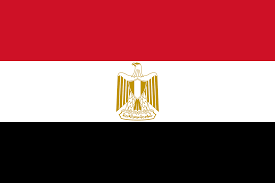Historical Eras

The Ottoman rule and Alexandria
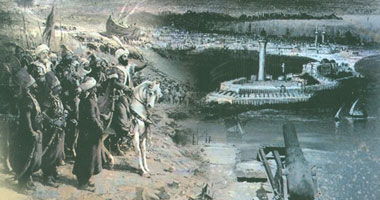
Alexandria shrank even more during the Ottoman Era (1517 - 1798 A.D.) starting from the rule of Elashraf Bersbey which witnessed the incident with the Cypriots which literally destroyed the city and its buildings. Later, in 1498, as the Portuguese discovered the road to the Cape of Good Hope, the Egyptian economy suffered even more. The city lost its trade significance and links with Europe and the world.
Decay reached its highest levels when Egypt lost its independence to become a mere Ottoman dominion in 1517 A.D.
Industries in Alexandria became scarce and were only limited to essential crafts for domestic consumption. Crafts mainly included handcrafts.
Alexandria, much like every city and town in Egypt, suffered from the shrinkage of the Ottoman authority in the second half of the Eighteenth Century.
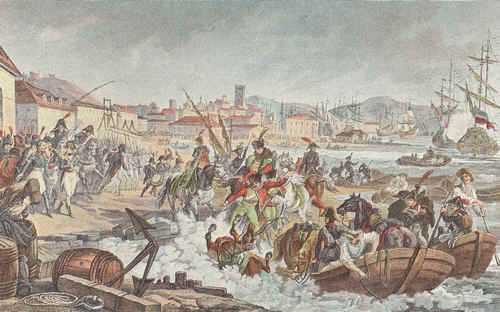
The French Expedition and Alexandria till 1807 A.D.
The French Expedition to Egypt in 1798 A.D. faced a big resistance from Alexandrians under the helm of the Governor of Alexandria – Elsayed Karim. Napoleon Bonaparte tried to influence the people by touching their religious feelings, and on July 4, 1798 A.D., Napoleon Bonaparte signed a pact with the people represented by the city seniors, authorizing them to live bby their own laws, continue practicing their religious cults, respecting justice as was the case prior to the arrival of the French Expedition, avoiding libidinous behavior and avoiding pronouncing any sentence prior to consulting the Council of the Ulemas.
Unfortunately, Elsayed Mohamed Karim – still Governor of Alexandria under the rule of the French Expedition – was arrested for treason and finally executed on September 6, 1798.
Following the evacuation of the French Expedition in 1801 A.D., Alexandria witnessed much chaos and unrest until the Higher Ottoman regime proclaimed Mohamed Aly Pasha as ruler of Egypt and Alexandria became a mainstay of the Ottoman authority in Egypt.
The dependency of Alexandria to the Higher Ottoman regime did not discourage Mohamed Aly Pasha from openly displaying his support for the French, much to the dislike of the British who had a keen interest in maintaining their presence in Egypt and sent a British Expedition to Alexandria on March 20, 1807 A.D. It was on the morning of September 20, 1807 A.D. that the appointed Governor of Alexandria – Amin Agha – surrendered to the 2000-men strong force of Mohamed Aly Pasha who stormed the city of Alexandria. The evacuation of the British was accompanied by a large exodus of people who felt betrayed and hated by their fellow citizens for their support and cooperation with the ousted British forces.
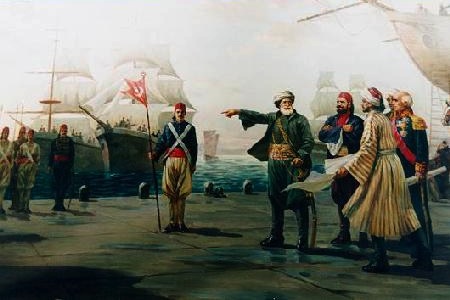
The Mohamed Aly Era from 1807 to 1848 A.D. and Alexandria
The glory of Alexandria during the rule of Mohamed Aly from 1805 to 1848 A.D. was beyond anything it had witnessed in the past.
The Mahmoudeya Canal was dug to replace the old Canal of Alexandria (the Ashrafeya Bay) at the hands of hundreds of laborers from the Governorates of Behera, Gharbeya, Sharkeya, Dakahleya, Menufia, Kalioubeya and Giza. The works were concluded in December 1820 A.D. and the canal was inaugurated in February 1821 A.D. under the name of Mahmoudeya in memory of the Ottoman Sultan Mahmoud the Second.
The canal was a major breakthrough for fresh water supply and trade in Alexandria, after the city of Rosetta had been the leading harbor in the Western Delta region and Alexandria prospered with agriculture and beautiful gardens once more.
Mohamed Aly also built numerous naval and industrial plants to help Alexandria develop as a major economic spot. The main achievement in the field of heavy industries was the foundation of the “Alexandria Arsenal” for the construction of navy vessels, replacing the older arsenal and a training center for shipbuilding, repair and refurbishing.
In parallel, Mohamed Aly ordered the modernization and extension of the Port of Alexandria with deepening of the waterway, the building of separate piers for docking passenger and merchant vessels and the construction of a new lighthouse on the Ras-El-Tin peninsula to better help guide ships about to enter the port.
The efforts of Mohamed Aly in these construction projects have been invaluable for the city line of Alexandria and have been a major attraction for many dwellers.
It is noteworthy to mention the improvement in the level of security and the religious tolerance that prevailed in Egypt during his reign and particularly in Alexandria, where foreigners flocked in key districts such as Mansheya Square. The proliferation in trade and commercial activity made of Alexandria a major trade hub in the Middle East, with ever increasing number of ships and vessels using the port facilities and the inevitable increased income from the custom duties on the goods traded either as imports or exports.
The opening of the Bank of Alexandria further boosted trade activity. However, the bank only survived a couple of years as Mohamed Aly ordered its closure two years after its inauguration.
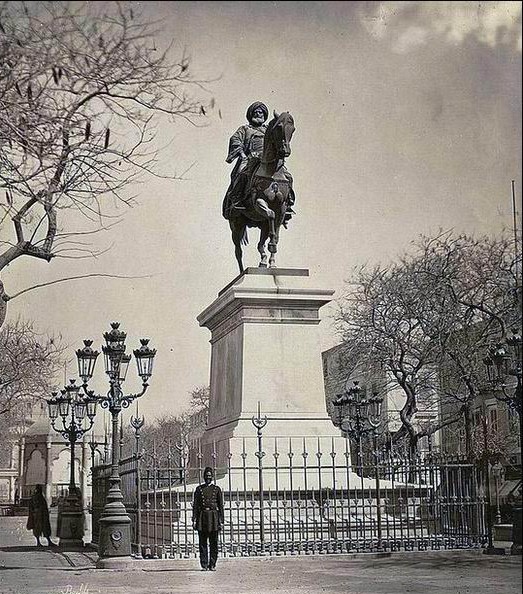
Heirs of Mohamed Aly (1848-1879) and Alexandria
The Khedive also inaugurated a park on the Mahmoudeya Canal, the Hakaneya Palace and the Mixed Court. Besides, he built several new districts in Alexandria and, in a deal with LeBon Company, provided Alexandria with lighting city gas and fresh potable water through a deal with the National Alexandria Drinking Water Company. A sewage network was also built, along with a health care system, a large railroad network connecting Alexandria with many towns in Egypt and an extensive telegraph service network.
In addition, a huge floating metal workshop for ship repair was imported from France in 1868 A.D. to replace the older stone dock which had been built in the era of Mohamed Aly and could not cope with larger ships. A wave breaker from the Ras Eltin peninsula to Agamy and several lighthouses were constructed (the Agamy lighthouse, the Port Wavebreaker lighthouse, the Kabary lighthouse). The Khedive also refurbished the Alexandria Arsenal with its laboratories and factories, which he supplemented with the most modern machinery and tools. He also renovated the Naval Academy and revamped the commercial fleet to boost foreign trade and navigation from and to Alexandria.
An education reform also took place with the renovation of many schools and the Alexandrian Press witnessed the appearance of several newspapers, such as the Planet of the East (Elkawkab El Sharky), the Pyramids (Al Ahram) and Trade (Al Tigara).
